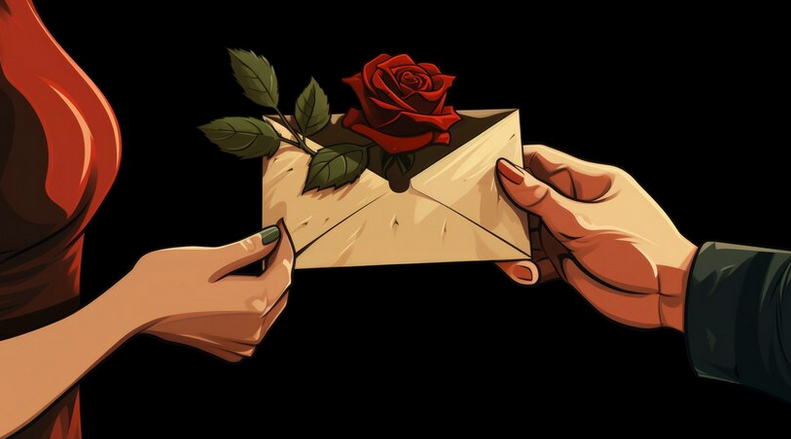A returned letter is not just a mail failure, but a mysterious sign that can open up new dimensions of your understanding. My experience with such letters has taught me that behind every return there are stories searching for a storyteller. Ready to discover how unfinished messages can change your life?

Glossary
📬 Returned letter - a letter or message, which was not delivered to the recipient, but was returned to the sender for various reasons, for example, an incorrect address or refusal by the recipient.
🗒️ Interpretation - the process of analyzing and understanding the meaning of the returned letter, taking into account the context and circumstances under which it was sent and returned.
📖 Contexts – different scenarios or situations, in which the returned letter can be analyzed, for example, personal life, business correspondence, historical events.
❓ Interest - the desire to explore and understand the causes and the consequences of blank or undeliverable emails and their impact on communication.
🕵️ Riddle - an aspect of the returned letter that raises questions and confusion among senders as to why the letter did not reach the addressee.
📆 Historical context – circumstances or events, which may influence the understanding of the returned letter based on historical examples and cultural traditions.
💌 Business correspondence - exchange of letters or messages in the professional field, where returned letters may indicate problems in communication or organization.
📫 Incorrect address is one of the main reasons return of a letter due to the lack of accurate information about the recipient’s place of residence or work.
🔒 Rejection – the recipient’s decision not to accept the letter , which may be related to personal or professional circumstances, leads to his return.
🤔 Psychology of communication is a field of knowledge that studies how a returned letter can affect the emotions and behavior of the sender and recipient.
Differences between soft and hard bounces
When I first encountered the subject of bounced emails, I was struck by how multifaceted this phenomenon can be. A bounce email is essentially a notification that an email message could not be delivered to the recipient. But what I learned next opened up completely new horizons in understanding the problem.

Soft and hard returns
The first story that comes to mind happened when I was organizing a large mailing campaign for my project. At the start of the newsletter, I was full of optimism: the audience was ready, the content was at the highest level. However, a few hours after sending, I received the first return notification. And that was just the beginning. This is how I learned the difference between soft and hard returns.
Soft returns are like minor troubles, which can be eliminated. For example, if the recipient's mailbox is full or the server is temporarily unavailable. In such situations, there is a sense of hope: the letter will be delivered as soon as the problem is resolved. One of my subscribers, after several returns, simply cleared his mailbox and the messages began to arrive again.
Hard returns are the more painful side of the coin. This is a situation where the address to which I tried to send a letter simply does not exist. For example, once a letter was returned with the message that such an adrasat did not exist. This always raises questions: how can sometimes important contacts disappear from memory, leaving only emptiness?
Why is this important?
I noticed that the return rate of emails affects the entire campaign. The higher your return rate (or bounce rate), the lower the chance that your future emails will be taken seriously. The situation got me thinking about how often we ignore obvious signs along the way.
In personal communications with clients and subscribers, I began to emphasize the importance of keeping my databases up to date. Yes, it may seem obvious, but often we forget to update our contacts.
"Lack of interaction with customers leads to a loss of connection. Pay attention to the little things - they can make a difference" - Anne Handley, Content Director at MarketingProfs (an educational platform for marketers), author of a column in Entrepreneur magazine, one of the best female bloggers according to Forbes, and simply a goddess of commercial writing. Ann is sure: you can’t be a good marketer if you don’t know how to write and decided to teach everyone this business.
Practical advice
After working with errors and returns, I have applied several strategies in practice that work:
- Checking the relevance of contacts before mass mailing. It is better to have fewer addresses, but better ones.
- Using automated systems to get real-time returns data.
- Regularly checking and cleaning your database not only improves deliverability, but also saves you effort.
- Asking subscribers to confirm their addresses will strengthen the connection and show that they are important.
These small steps have reduced the number of returns and greatly improved my efficiency. As a result, by carefully working on my lists, I was able to not only reduce the dismal return rates of emails, but also increase the level of trust among subscribers.
Summary
A bounced email isn't just a negative thing, it's an opportunity to rethink how you communicate with your audience. As they usually say: “Every failure is a step towards success.” Don't ignore the signals your emails give you. Don't be ashamed of mistakes, it's better to learn from them and move on.
Steps for effective mailing
| Step | Description |
|---|---|
| 1. | Create an up-to-date contact list |
| 2. | Implement automated return notifications |
| 3. | Perform periodic database checks |
| 4. | Request confirmation of addresses from subscribers |
These small but important steps will help you not only avoid unnecessary returns, but also maintain a high level of communication with your customers.

Often asked questions on the topic: Returned letter
What is a returned letter?
What are the main reasons for returning an email?
Why are returned letters of interest to researchers?
How does the returned letter relate to the concept of time?
What are the psychological aspects of a returned letter?
How to return the recipient status when sending a letter?
How can I avoid email bounces in the future?
Can a returned letter be an academic subject for study?
Thank you for becoming wiser! 🎉
The returned letter is not just a digital artifact, it is a whole mystery hiding many layers of meaning. I remember a case when one of my clients encountered such a letter and, having understood its essence, overcame financial difficulties. It was a revelation: mistakes made in the past do not have to determine our future. Attention to detail and analysis of the situation allowed her not only to get out of debt, but also to launch a new project. 🌟 Now you have the knowledge that will help you see the depth of simple facts! Share your opinion in the comments!
.gif)
Article Target
Inform and entertain readers and explore the meaning of the returned letter.
Target audience
People interested in psychology, relationships and personal growth.
Hashtags
Save a link to this article
Galina Ostrachinyna
Copywriter ElbuzThe secrets of online store automation are revealed here, like the pages of a magic book of a successful business. Welcome to my world, where every idea is the key to online effectiveness!
Discussion of the topic – Returned letter
A detailed description of what a bounce letter is, how it can be interpreted in different contexts, and why this phenomenon is of interest.
Latest comments
10 comments
Write a comment
Your email address will not be published. Required fields are checked *




















.png)




Галина Остраницына
Returned mail is a very interesting phenomenon. It carries not only mysticism, but also deep meaning. Maybe someone has examples from personal experience? 📝
Tommy Smith
Interesting, Galina! I think the returned letters may represent innuendo. Personally, I once had a letter returned to me, and it was the beginning of an amazing story about lost love. ❤️
Anna Müller
Tommy, this is great! And I had a situation where a returned letter became the impetus for a new start. It sounds like a metaphor: broken connections can lead to new opportunities! 🌟
Pierre Dupont
Super discussion! I believe that every returned letter is an opportunity to learn more about yourself. To be honest, I have always been attracted to the fact that letters can “live” again. 💌
María García
Interesting, Pierre! I've thought a lot about how letters can reflect our feelings. I recently lost a letter from a friend, and it was like losing a piece of myself. 😢
Jakub Nowak
Maria, I agree! Letters are not just words, they are emotions. A returned letter can be a signal that you need to change something in yourself or in a relationship. 💭
Olga Ivanova
Sounds so wise, Jacob! I believe that returned letters can reveal our secret desires. Every time I read them, I see something new. 🌈
Hugo Berthold
I may disagree. It seems to me that all this talk about returned letters is just fiction. As if they change something in our lives. 🙄
Галина Остраницына
Hugo, I see your point. But returned letters can be a catalyst for deep reflection about the past and future. Everyone has the right to their own experience! ✨
Sofia Rossi
Galina, exactly! I think moments like these can help us better understand our mistakes and aspirations. This in turn enriches our lives! 🌸